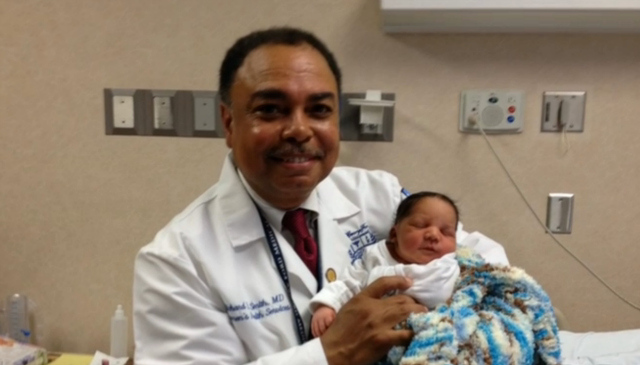
The study found that minority physicians care for 54 percent of minority patients and 70 percent of non-English-speaking patients. Other related findings include:
* Asian, Hispanic and Black patients were 19-26 times more likely to be cared for by a minority physician of their same race.
* Low-income patients were 1 1/2 to 2 times more likely to be cared for by Black, Hispanic and Asian physicians.
* Medicaid patients were 2 times to nearly 4 times more likely to be cared for by Black, Hispanic and Asian physicians.
Currently, African-Americans and Hispanics are substantially underrepresented in the physician workforce. Despite making up over 25 percent of the U.S. population, African-Americans and Hispanics make up less than 15 percent of the physicians.
“Patients from disadvantaged groups have substantial problems accessing care,” said the lead author, Dr. Lyndonna Marrast, a physician at Cambridge Health Alliance. “The fact that minority physicians are much more likely to care for disadvantaged patients suggests that expanding the racial diversity of the physician workforce in the U.S. could be key to improving access to care.”
The study, which analyzed data from a 2010 federal survey of 7,070 patients across the U.S., also showed that minority physicians were substantially more likely to care for patients with worse self-reported health status. For other measures of health, such as obesity, the picture was mixed: Black physicians were more likely, and Hispanic and Asian physicians less likely, to care for obese patients.
The Patient Protection and Affordable Care Act, which is being rolled out currently in every state, is expected to expand insurance coverage for low-income, uninsured patients, many of whom will also be minorities. “There is a lot of concern that there will not be enough physicians willing and able to care for them,” said Dr. Danny McCormick, the study’s senior author and associate professor of medicine at Harvard Medical School. “In order to increase the number of Black and Hispanic physicians, medical schools will need to more fully consider the physician workforce needs of the health care system as a whole in admissions decisions.”
“Our findings do not argue for strengthening the existing de facto segregation of medical care,” said Dr. Steffie Woolhandler, professor of public health at City University of New York, co-founder of Physicians for a National Health Program, and a study co-author. “But it is clear that doctors’ decisions on where to practice and patients’ decisions on where to go for care combine to create an outsized role for minority physicians in caring for the underserved.”
